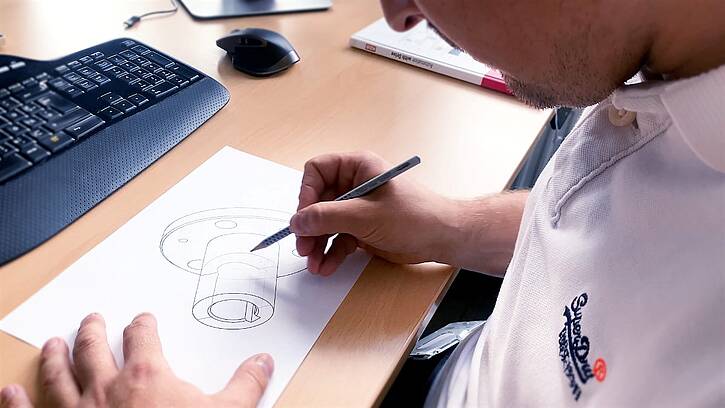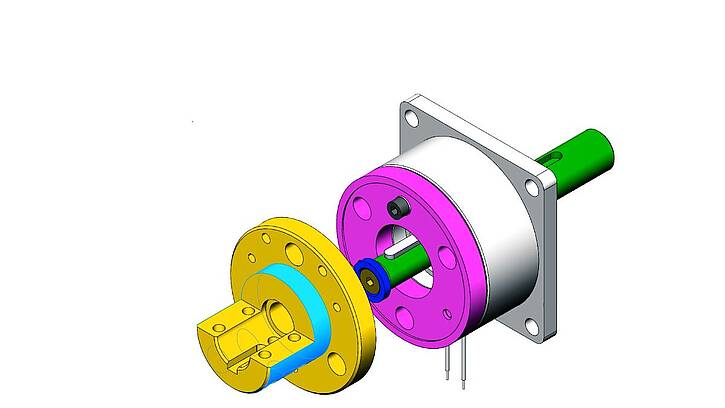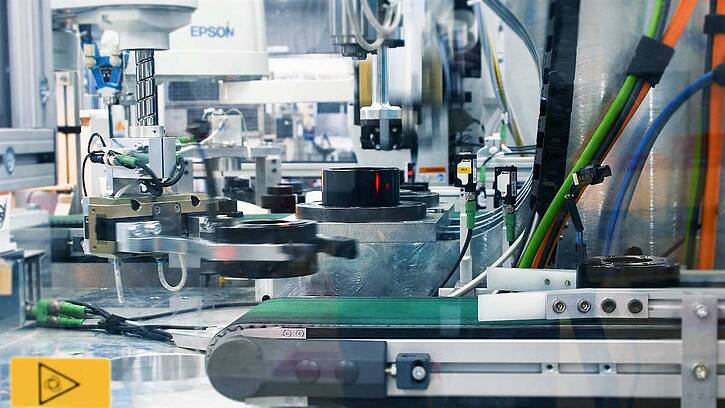From prototype to individual product: How your brake is made
Behind the scenes of the brakes & clutches department
At KEB Automation, individual (system) solutions are standard. But how exactly does this apply to brakes and clutches? Not only did the business unit lay the foundation for the company over 50 years ago, but it has always been one of the units with a particularly high level of vertical integration, enabling it to respond flexibly to a wide range of customer needs. In practice, this means that development, production, sales and much more is done in-house. Let's take a look at how KEB brakes and clutches become production-ready, customised products.

Spring-applied brakes, permanent magnet brakes and clutches or power-applied clutches and brakes: they are all available in customer-specific versions. This is possible due to the fact that KEB is able to manufacture more than 90 percent of its components for brakes and clutches within its own operations. This means that the requirements, which differ from application to application, can be taken into account in the best possible way. In the past, this approach has led to the development of double or bistable brakes (flip-flop) in the field of spring-applied brakes. Increased protection classes, special coil voltages and lockable manual releases are also among the solutions already available.
Step 1: Customer consultation
“When a customer needs a special solution, it is either to modify an existing brake or clutch solution or to develop a new product. For this purpose, a specification sheet for the respective application is submitted, which includes information on the installation space or specific technical specifications for the development,” says Anja Groyecki, sales engineer at KEB. Together with the customer, the technical requirements and the information needed from the customer to be able to tackle the design of a first prototype are discussed from the outset. Customer-specific solutions are possible in almost all product areas.

Step 2: Construction and development
Once the customer requirements have been recorded and considered theoretically, the in-house construction and development department comes into play in the next step. Developers and technical product designers, among others, implement an installation proposal, individual part drawings and, finally, an overall drawing of the desired product. Depending on whether a completely new brake or clutch is to be developed or a variant of an existing brake or clutch is to be created, the time required for this process varies. While variant designs can sometimes be created in a few days, the development time for completely new brakes can take several years. Some of the many aspects that need to be considered include taking wear into account and designing the magnetic circuit and torque. The permanent magnet brake COMBIPERM P2 and the holding brake COMBISTOP S1, for example, are the latest to be launched on the market. These product launches were preceded by development processes that took several years.
Step 3: Sample construction
KEB's goal is to implement high-quality special designs so that every application can be equipped with the precisely fitting brake or clutch and customers can benefit from noticeable cost savings in the overall system. Important here: prototyping and the associated manufacturing processes. “Basically, we always assume that everything that can be produced on our machines can be implemented for the customer,” says Groyecki. The production of a prototype and the processes that need to be carried out beforehand are time-consuming because numerous departments are involved. Among others, the design, purchasing, production planning, production control, testing and application sales departments are involved in creating drafts, drawing individual parts, obtaining offers for components to be installed, and setting up validation plans or test notifications.

Step 4: Tests
Brake special solutions are ordered by drive technology manufacturers or by customers from specific application areas such as medical technology, among others. To ensure that the required prototype also works to the customer's complete satisfaction and with the greatest possible safety, the prototype undergoes various internal measurement and test procedures. Among other things, torques under different conditions or switching times are tested and leak tests are also carried out. Once all the necessary tests have been completed, the customer receives the prototype for sampling. If all the requirements for the brake are met, the prototype is then replaced by a new status: series production.
Step 5: Start of series production
“For us and for the customer, it is always a special moment when an individual solution goes into series production. Due to the high level of vertical integration, we also have access to every step of the manufacturing process in series production and can carry out changes or adjustments quickly and easily. In this way, we ensure that the result meets the customer's wishes and technical requirements in the long term,” says Groyecki. Once an idea has been developed into a prototype and ultimately into a product that is ready for series production, the release for the distribution of the new brake or clutch marks the preliminary conclusion of the development process.
